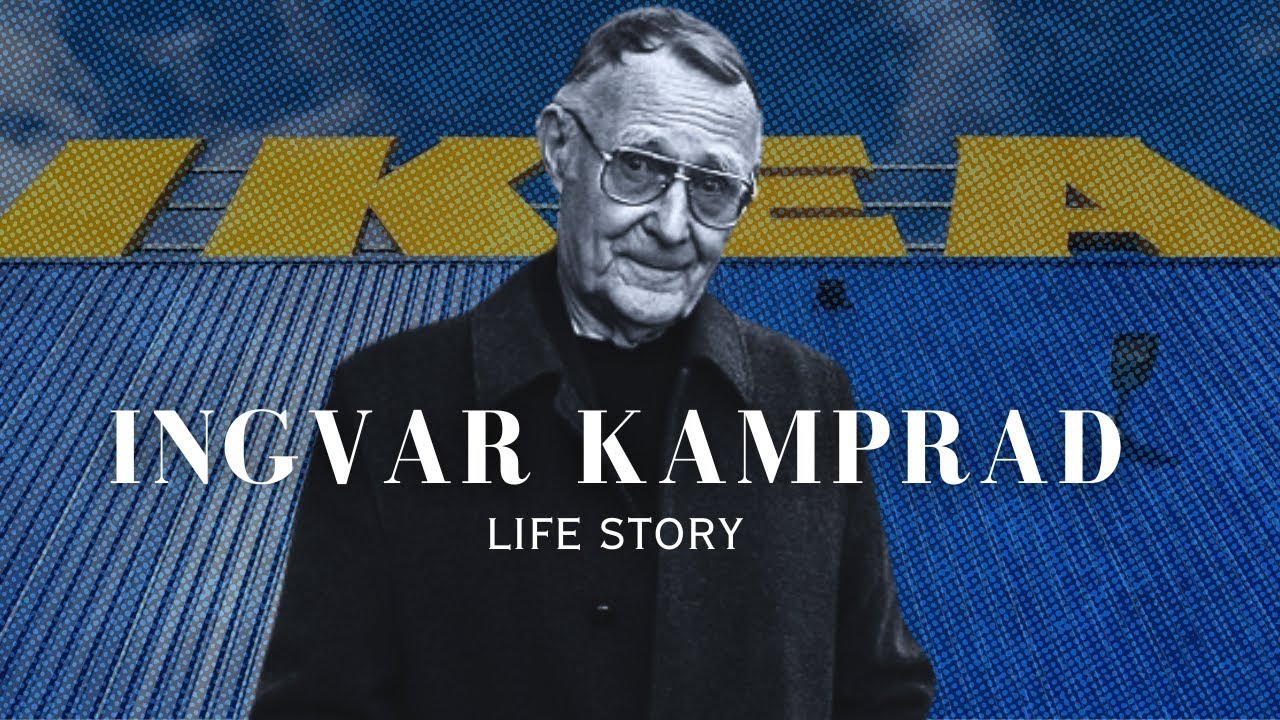The Dark History of Ikea
Summary
TLDRIngvar Kamprad, a dyslexic farm boy from Småland, Sweden, began his entrepreneurial journey at five by selling matchsticks. His business acumen expanded into various products and eventually led to founding IKEA in 1943. Focusing on affordable, quality furniture, IKEA revolutionized the industry with flat-pack designs. Despite early skepticism, IKEA's commitment to innovation, sustainability, and social responsibility has made it the world's largest furniture retailer, with a presence in nearly every home.
Takeaways
- 🔥 Ingvar Kamprad started his entrepreneurial journey at the age of five by selling matchsticks in 1931.
- 🌱 Born in 1926 in Småland, Sweden, Ingvar's family farm was in an area known for its hardworking and financially creative residents.
- 🚲 Kamprad expanded his business using his mother's bicycle to sell various products to neighboring farms.
- 🏫 Despite attending boarding school, Ingvar continued his business ventures, selling items like wallets and watches to his classmates.
- 💼 In 1943, at the age of 17, Ingvar founded IKEA with a registration fee gifted by his father.
- 📚 IKEA initially operated as a mail-order service selling household goods, and later expanded to include furniture as its main product.
- 🛋️ The introduction of the flatpack furniture design by IKEA employee Gillis Lundgren revolutionized the furniture industry by making products easier and cheaper to transport.
- 🌐 Facing boycotts from manufacturers, IKEA took control of its production process, designing, producing, and flat-packing its own furniture.
- 🌳 IKEA's commitment to reinvesting profits into operations and charitable endeavors has been a key to its success.
- 🌍 The company expanded globally, with its first store outside Scandinavia opening in Sydney in 1973.
- 🏢 IKEA's dedication to quality, affordability, and societal betterment has endeared it to consumers worldwide.
Q & A
How old was Ingvar Kamprad when he started selling matchsticks?
-Ingvar Kamprad was five years old when he started selling matchsticks.
What was the initial business model of IKEA?
-IKEA initially operated as a mail-order service, selling a variety of household goods through brochures.
What was the first product that IKEA sold?
-The first product that Ingvar Kamprad sold was matchsticks, which he repackaged and sold to his neighbors.
How did Ingvar Kamprad expand his business during his childhood?
-Ingvar expanded his business by cycling to neighboring farms to sell a variety of products like magazines, Christmas cards, vegetable seeds, and fish.
What was the significance of the graduation gift Ingvar Kamprad received?
-The graduation gift Ingvar received was significant because it covered the registration fee for him to officially found IKEA.
When did IKEA release its first catalog?
-IKEA released its first catalog in 1951, with furniture becoming the main attraction.
Who was the IKEA employee that came up with the idea of flatpack furniture?
-Gillis Lundgren, an IKEA employee and furniture designer, was the one who came up with the idea of flatpack furniture.
What was the first IKEA product to be sold in flatpack format?
-The first IKEA product to be sold in flatpack format was the Lövbacken table, known at the time as the Lövet.
How did IKEA respond to the boycotts from manufacturers?
-IKEA responded to the boycotts by starting to design, produce, showcase, and flat-pack all of their own furniture in-house.
When did IKEA first expand outside of Scandinavia?
-IKEA first expanded outside of Scandinavia in 1973, with stores opening in locations such as Sydney and Hong Kong.
What is one of the core principles of IKEA's success?
-One of the core principles of IKEA's success is its penchant for reinvesting profits into its operations or branching out to more charitable endeavors.
Outlines

Этот раздел доступен только подписчикам платных тарифов. Пожалуйста, перейдите на платный тариф для доступа.
Перейти на платный тарифMindmap

Этот раздел доступен только подписчикам платных тарифов. Пожалуйста, перейдите на платный тариф для доступа.
Перейти на платный тарифKeywords

Этот раздел доступен только подписчикам платных тарифов. Пожалуйста, перейдите на платный тариф для доступа.
Перейти на платный тарифHighlights

Этот раздел доступен только подписчикам платных тарифов. Пожалуйста, перейдите на платный тариф для доступа.
Перейти на платный тарифTranscripts

Этот раздел доступен только подписчикам платных тарифов. Пожалуйста, перейдите на платный тариф для доступа.
Перейти на платный тарифПосмотреть больше похожих видео
5.0 / 5 (0 votes)






